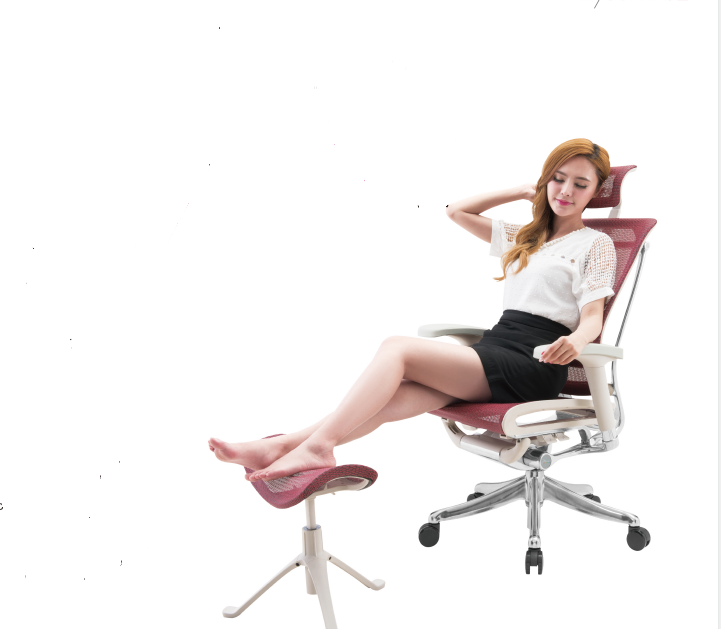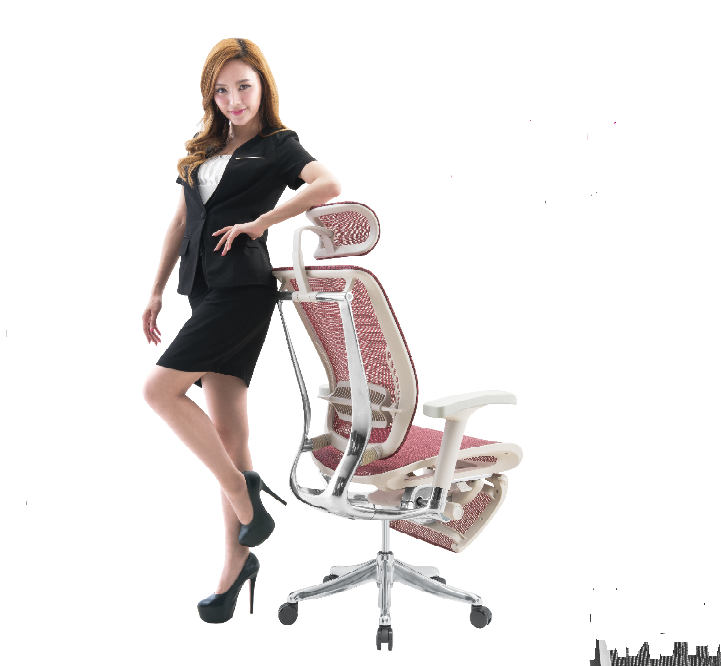BETTER TOUCH BETTER BUSINESS
Contact Sales at Hookay.

In the wake of the transformative impact of the COVID-19 pandemic, the landscape of work has undergone a profound shift, leading to an unprecedented surge in the demand for ergonomic office chairs. With remote work becoming the norm, individuals seeking comfort, support, and a health-conscious workspace have increasingly turned their attention to these specialized chairs. However, a common query arises as prospective buyers delve into the market: why are ergonomic office chairs seemingly so expensive? This inquiry prompts an exploration into the intricate design, distinctive features, exhaustive research and development (R&D) efforts, mold creation, testing protocols, and the high-quality materials that contribute to the elevated cost of ergonomic office chairs. This exploration aims to unravel the underlying reasons, emphasizing the indispensable role these chairs play in ensuring long-term well-being and comfort for those navigating the evolving dynamics of modern workspaces.
Uniqueness of Ergonomic Design
The uniqueness of ergonomic design lies at the core of the seemingly higher cost of ergonomic office chairs. Distinctively fashioned to meet the evolving demands of modern workspaces, ergonomic chairs transcend mere functionality to embody a fusion of unique aesthetics and health-conscious principles. Crafted with a meticulous focus on environmental-friendly materials such as breathable mesh, these chairs stand as a testament to both sustainability and user comfort. The incorporation of high-quality memory foam further elevates the ergonomic experience, offering a seating solution that adapts to individual body shapes while promoting optimal ventilation and heat dissipation. Beyond a mere piece of furniture, ergonomic office chairs serve as a contemporary, health-driven statement, providing a new paradigm of seated comfort that aligns seamlessly with the progressive trends in office and home office aesthetics. The intricacy of their design is not just a visual appeal but a deliberate effort to enhance well-being and productivity, making them a unique and worthwhile investment for those seeking an elevated seating experience.

Distinctive Features Setting Ergonomic Chairs Apart
Adjustable Headrests for Cervical Support: One of the standout features that distinguishes ergonomic office chairs is the incorporation of adjustable headrests. This innovative design allows users to tailor the height and rotation of the headrest, facilitating natural alignment with the cervical vertebrae. Ensuring that the headrest fully supports the user's neck promotes standardized sitting postures, offering optimal comfort and support during prolonged periods of desk work.
Customizable Chair Backs and Lumbar Support: Ergonomic chairs go beyond the one-size-fits-all approach with customizable chair backs, allowing users to adjust the height to meet their unique requirements. This adaptability ensures that the lumbar region, particularly the third and fourth vertebrae, receives the best possible support. By accommodating different users' needs, these chairs effectively reduce the strain on the lower back, contributing to a more comfortable and ergonomic seating experience.
Adaptable Armrests Enhancing User Experience: Another key feature that sets ergonomic chairs apart is the adaptability of armrests. Users can seamlessly adjust both the height and angle of the armrests, facilitating a smooth transition between the chair and the workspace. This flexibility not only enhances user comfort but also addresses ergonomic concerns, ensuring that arms are appropriately supported during various tasks. The ability to personalize armrest positions adds a layer of customization that contributes to an overall improved seating experience.
Dynamic Lumbar Support for Long-Term Comfort: Ergonomic chairs often integrate dynamic lumbar support mechanisms, a feature that distinguishes them from conventional office chairs. This specialized support focuses on the third and fourth lumbar vertebrae, concentrating rebound forces to offer users optimal support. By adjusting the lumbar support, users can relax their entire lower back, reducing fatigue during extended periods of sitting and promoting long-term comfort.
Enhanced Comfort Through Adjustability: The collective emphasis on adjustable components in ergonomic chairs—headrests, chair backs, lumbar support, and armrests—reflects a commitment to enhancing user comfort. This adaptability allows individuals to tailor their seating experience based on personal preferences and ergonomic needs, creating a chair that not only supports the body's natural alignment but also minimizes the risk of orthopedic issues associated with prolonged sitting.
The Role of Research and Development (R&D)
The pivotal role of Research and Development (R&D) in the creation of ergonomic office chairs underscores the comprehensive efforts invested in designing chairs that go beyond mere functionality. To craft a truly effective ergonomic chair, extensive research becomes imperative. This multifaceted process involves not only understanding prevailing trends in furniture design but also delving into the intricacies of human anatomy, physiology, and the dynamics of long-duration seating. Designers, often a dedicated team, channel their energies into exploring the nuanced details that contribute to user experience, orthopedic health, and overall well-being.
In the realm of ergonomic chair development, designers must pay meticulous attention to every facet, considering factors such as lumbar support, seat contouring, and the impact of various materials on comfort. The goal is not just to provide a seating solution but to create an ergonomic masterpiece that adapts seamlessly to diverse body shapes and mitigates the risk of orthopedic ailments, muscle pain, and bone-related problems associated with prolonged sitting.
Moreover, the commitment to adaptability is central to the R&D process. Ergonomics, by definition, is the science of designing products and environments that align with the needs of the human body. Therefore, designers invest substantial effort into creating ergonomic chairs that cater to a wide spectrum of body types and user preferences. The result is a chair that not only conforms to established ergonomic principles but also surpasses them, offering users a level of comfort and support that transcends industry standards.
The high costs associated with R&D for ergonomic chairs reflect the depth of inquiry required to strike the delicate balance between form and function. It's not merely about creating a piece of furniture; it's about engineering a solution that promotes health, productivity, and comfort. The extensive efforts poured into the research and design phase are a testament to the commitment to excellence, positioning ergonomic office chairs as more than just items of furniture—they are embodiments of a scientific, user-centric approach to modern seating.
Mold Creation and Testing Expenses
Mold Creation: A fundamental aspect contributing to the cost of ergonomic office chairs is the intricate process of mold creation. Each component of these chairs, from the seat to the base and every adjustable part in between, requires its own custom mold. The creation of molds involves precision engineering, with a meticulous focus on replicating the exact specifications of the chair's design. This process demands substantial financial investment due to the complexity and uniqueness of each mold. Designers and manufacturers continually refine and optimize these molds to ensure consistency, durability, and the ability to mass-produce components that meet the high standards set by ergonomic designs.
Continuous Mold Optimization: The investment in mold creation is not a one-time expense but an ongoing commitment to refinement and optimization. As technology advances and design improvements are identified, molds need to be adjusted to incorporate these enhancements. This continuous optimization ensures that the ergonomic chairs produced maintain a high level of quality, adaptability, and durability. The iterative nature of mold optimization speaks to the dedication to staying at the forefront of ergonomic design trends and offering users the latest advancements in seating technology.
Rigorous Testing Protocols: Ergonomic office chairs undergo a battery of rigorous tests to ensure they meet stringent safety, comfort, and durability standards. These testing protocols are a crucial aspect of the manufacturing process, adding to the overall cost of production. Tests may include assessments of weight capacity, durability of adjustable components, and the longevity of materials used. The goal is to guarantee that the chairs not only provide immediate comfort but can withstand the wear and tear of daily use over an extended period.
Investment in Safety and Quality Assurance: Mold creation and testing expenses are fundamentally tied to the overarching commitment to safety and quality assurance. By investing in precise molds and subjecting chairs to rigorous testing, manufacturers aim to deliver a product that surpasses industry benchmarks. This commitment is especially crucial for ergonomic chairs, where user health and comfort are paramount. The costs incurred in these processes reflect the dedication to providing consumers with chairs that not only meet but exceed expectations in terms of safety, functionality, and longevity.
Materials and Their Impact on Chair Longevity
The choice of materials in crafting ergonomic office chairs plays a pivotal role in determining their longevity and overall performance. These chairs are designed not just as furniture but as enduring companions in the daily work routine, making the quality of materials a critical consideration. From the breathable mesh that provides elasticity and comfort to the sturdy plastic parts, gas lifts, and screws, every component is carefully selected to withstand the rigors of prolonged use. The thickness of aluminum, the strength of plastics, the resilience of the sponge, the lifting capability of gas lifts, and the wear resistance of casters are all factors carefully considered in material selection. Despite the visual similarities between chairs, these subtle material differences directly impact the chair's durability and performance over time. Ergonomic office chairs are crafted with a focus on longevity, ensuring that they not only meet but exceed expectations for comfort, support, and sustained quality throughout their extended lifespan.

Conclusion
In conclusion, the seemingly higher cost of ergonomic office chairs is intricately justified by the meticulous design, specialized features, extensive research and development, mold creation, testing protocols, and the deliberate choice of high-quality materials. These chairs are not merely pieces of furniture but a harmonious blend of science and design, tailored to enhance user well-being, productivity, and comfort. The uniqueness of ergonomic design, with its adjustable headrests, customizable chair backs, lumbar support, and adaptable armrests, represents a paradigm shift in seating solutions. The role of research and development reflects a commitment to adapting chairs to diverse body shapes and minimizing the risk of orthopedic issues associated with prolonged sitting. Mold creation and testing, while incurring expenses, are integral to ensuring the consistency, durability, and safety of each chair produced. The careful selection of materials, from breathable mesh to robust components, underscores a dedication to longevity and sustained quality.
These ergonomic office chairs transcend mere commodities; they are investments in the health, comfort, and productivity of individuals navigating the demands of contemporary workspaces. While the initial cost may seem substantial, the enduring benefits of enhanced comfort, support, and prevention of health issues make them a prudent and worthwhile investment. Choosing an ergonomic office chair is not just a decision for today but a commitment to a future where well-being and productivity are seamlessly woven into the fabric of daily work life. As the evolving dynamics of workspaces continue to prioritize user-centric designs, ergonomic chairs stand as beacons of innovation, symbolizing a fusion of functionality, style, and a holistic approach to modern seating.
We are here to help you! If you close the chatbox, you will automatically receive a response from us via email. Please be sure to leave your contact details so that we can better assist